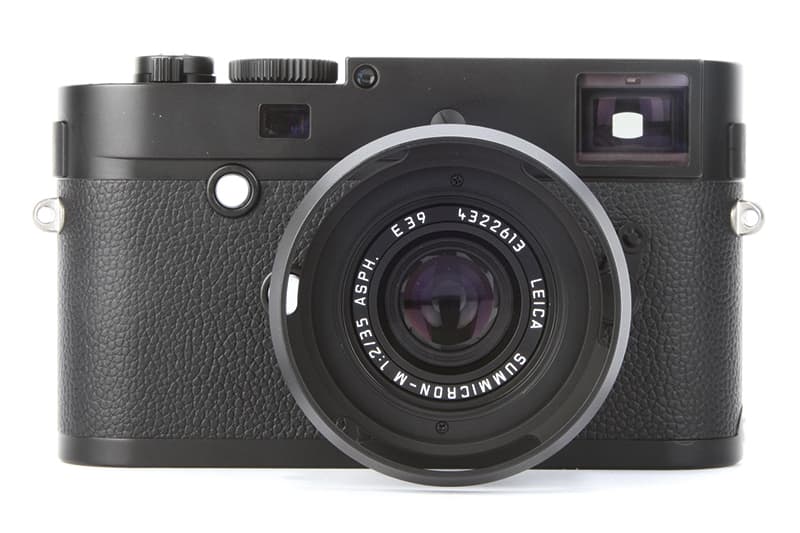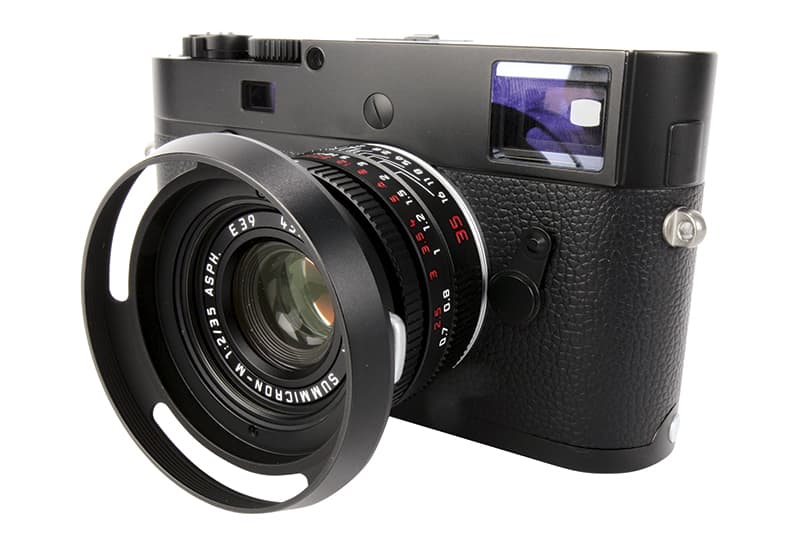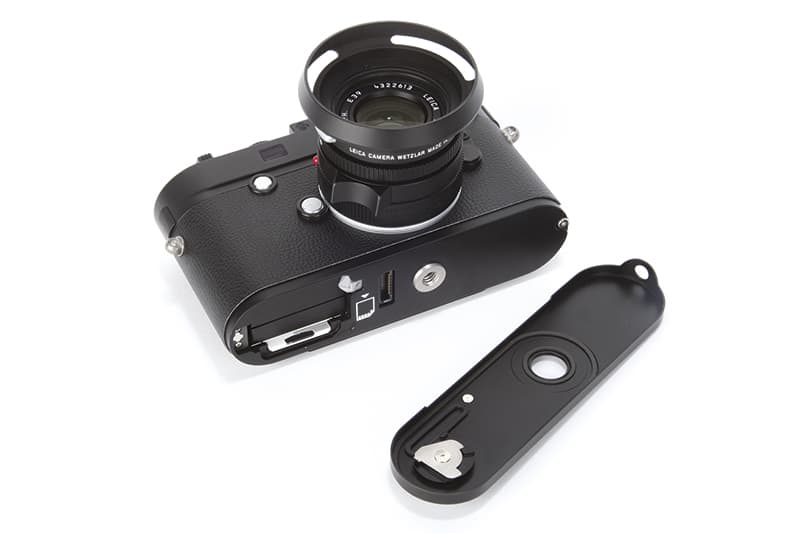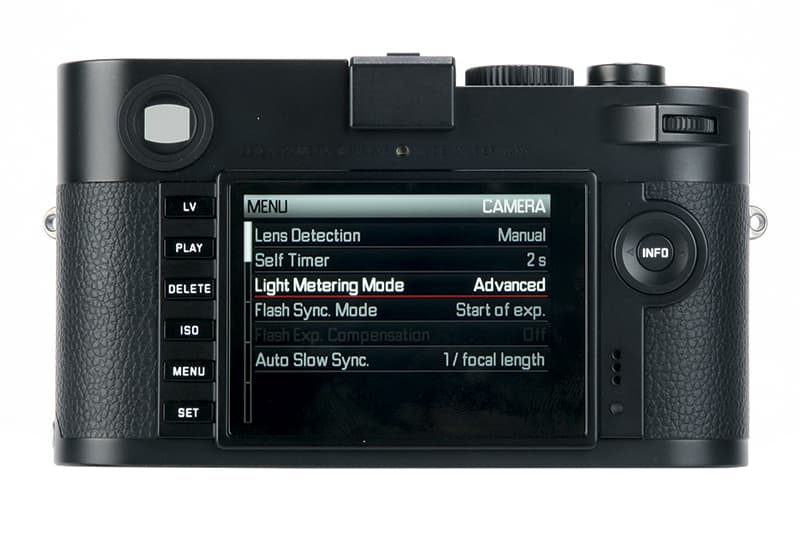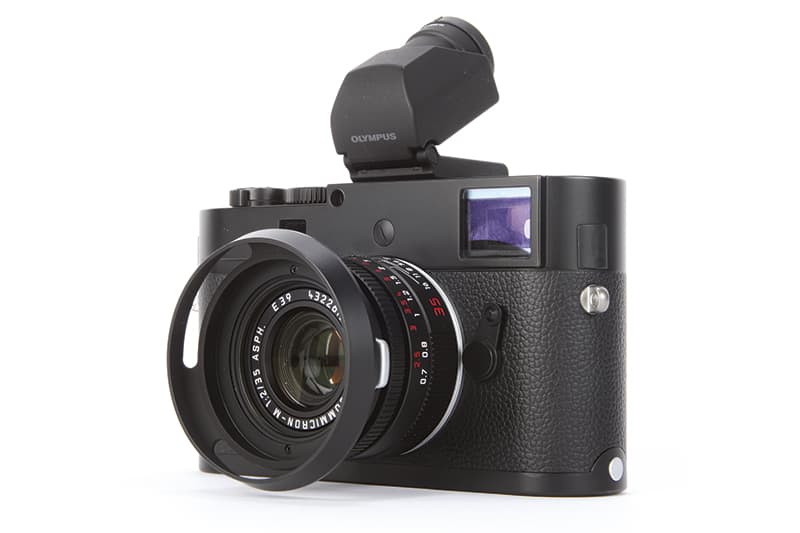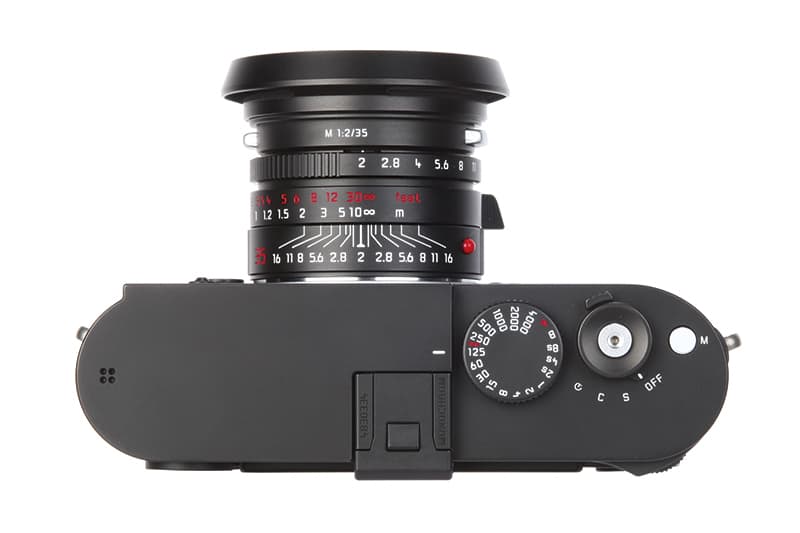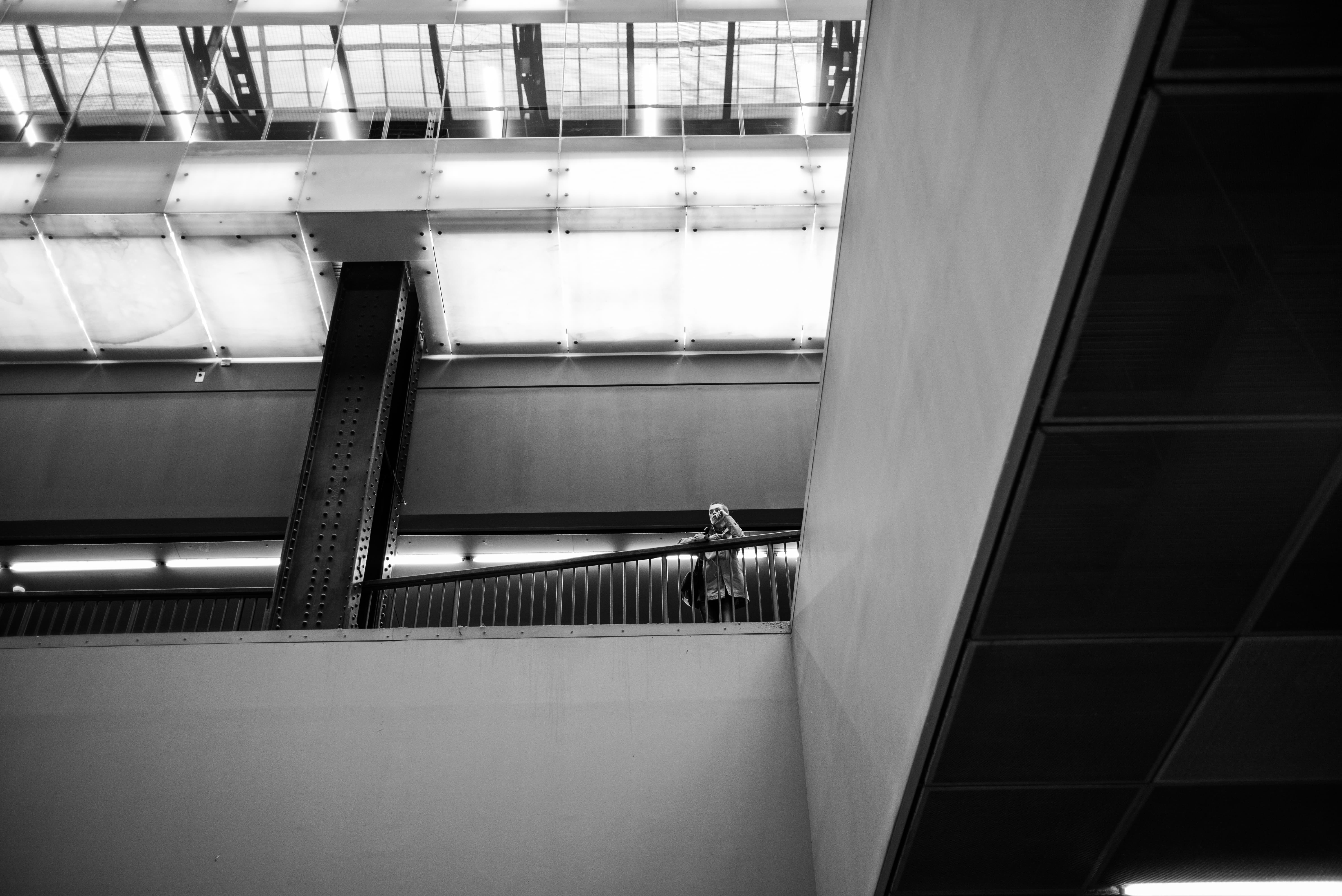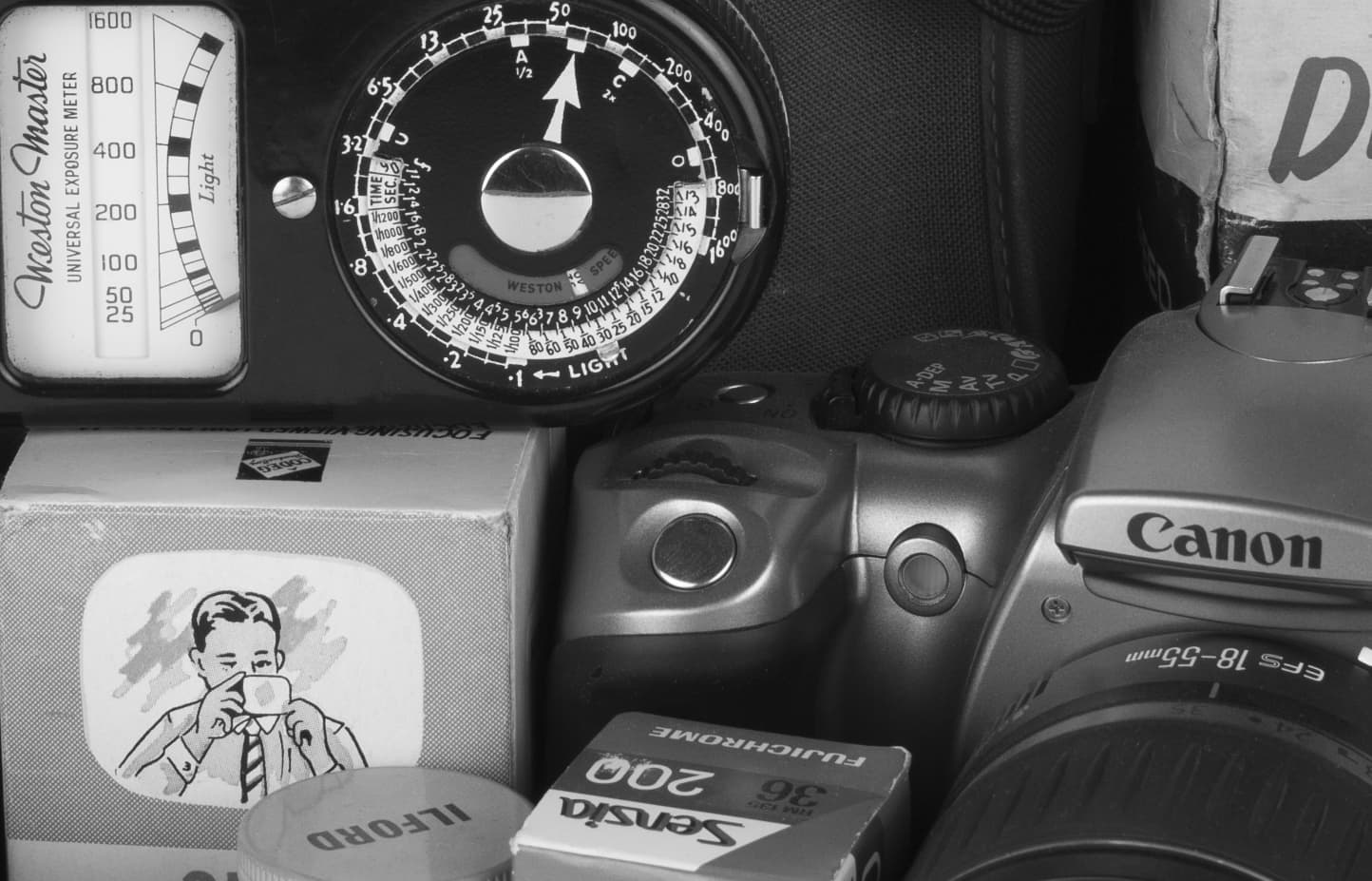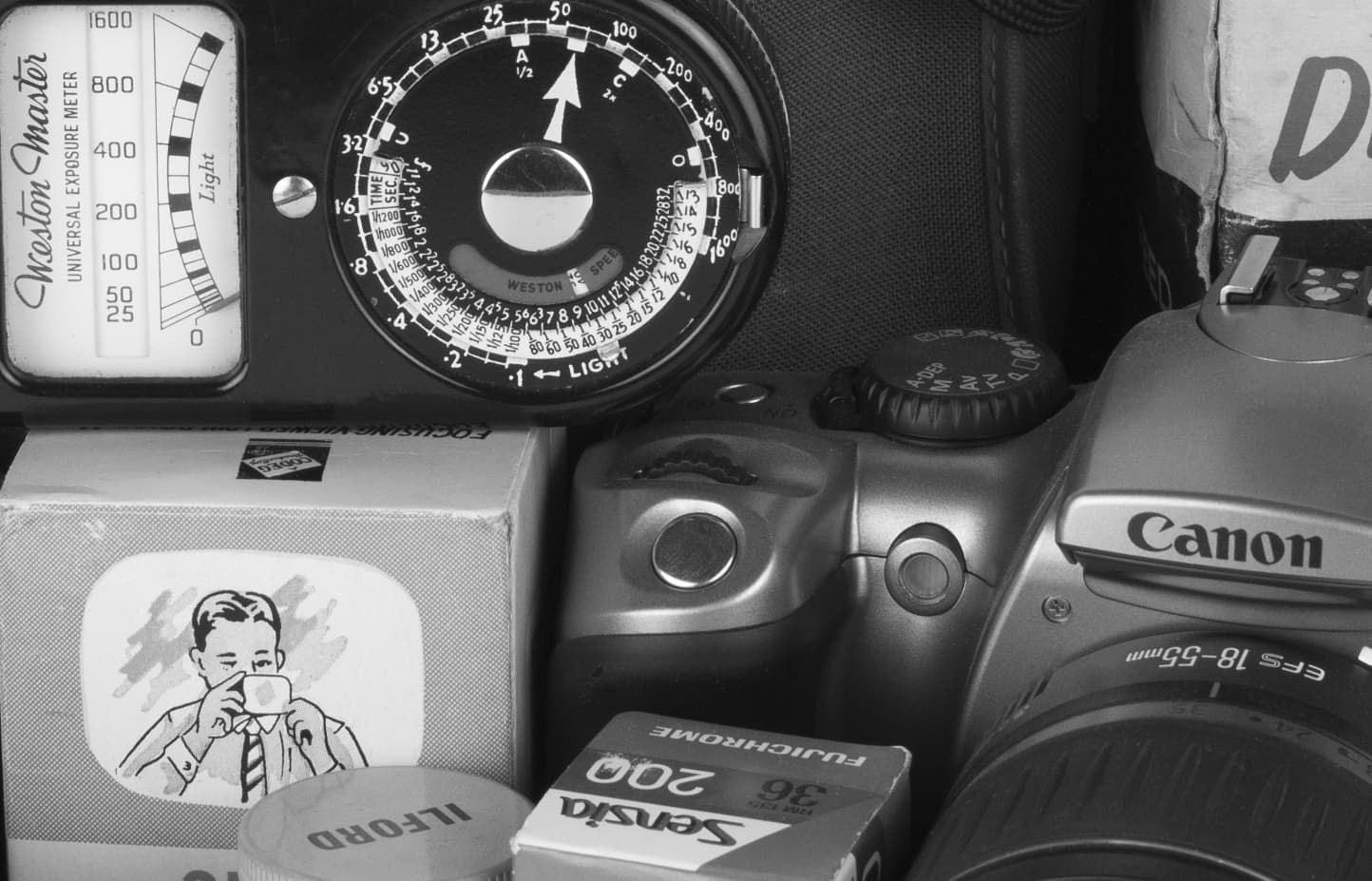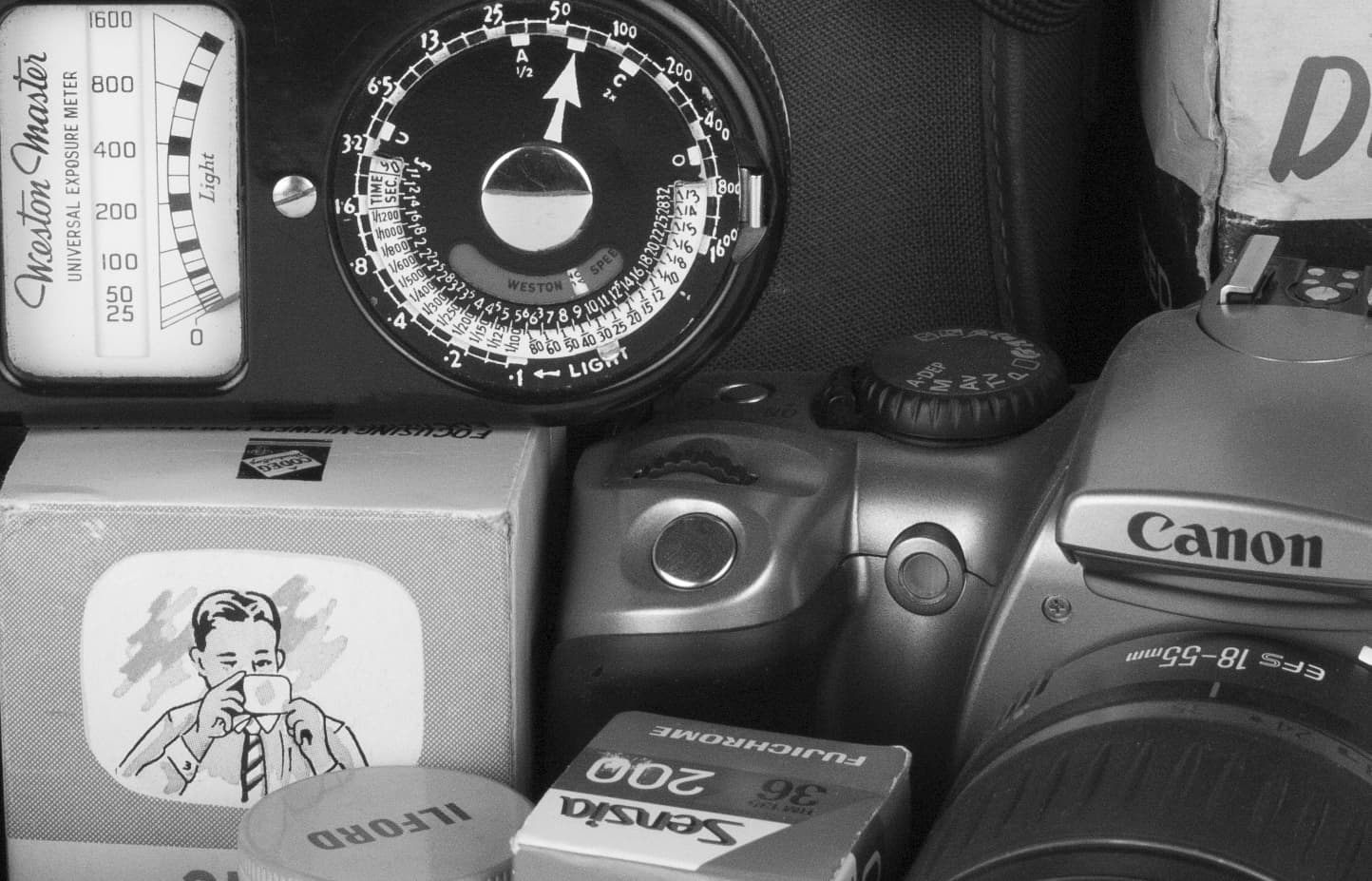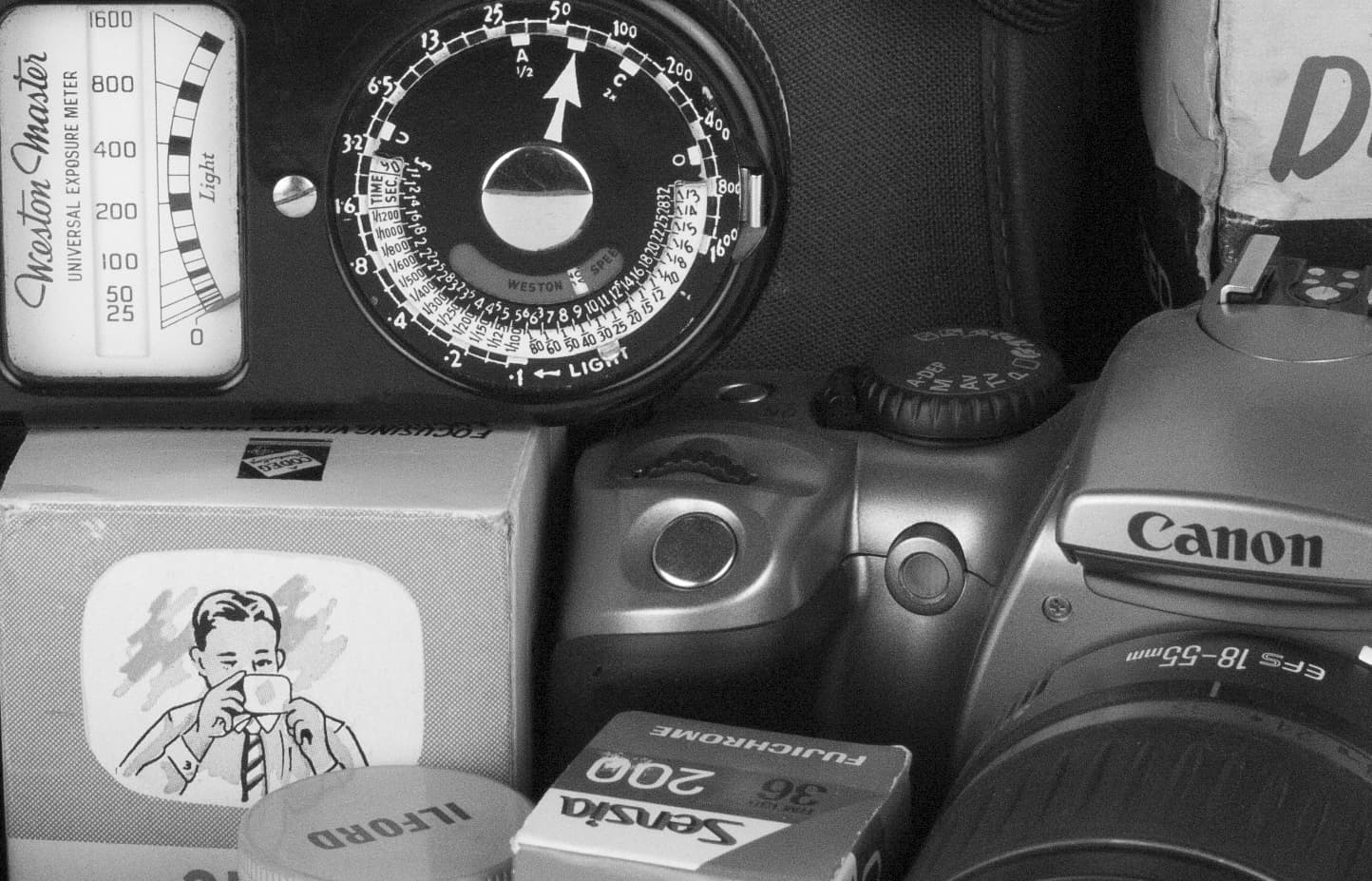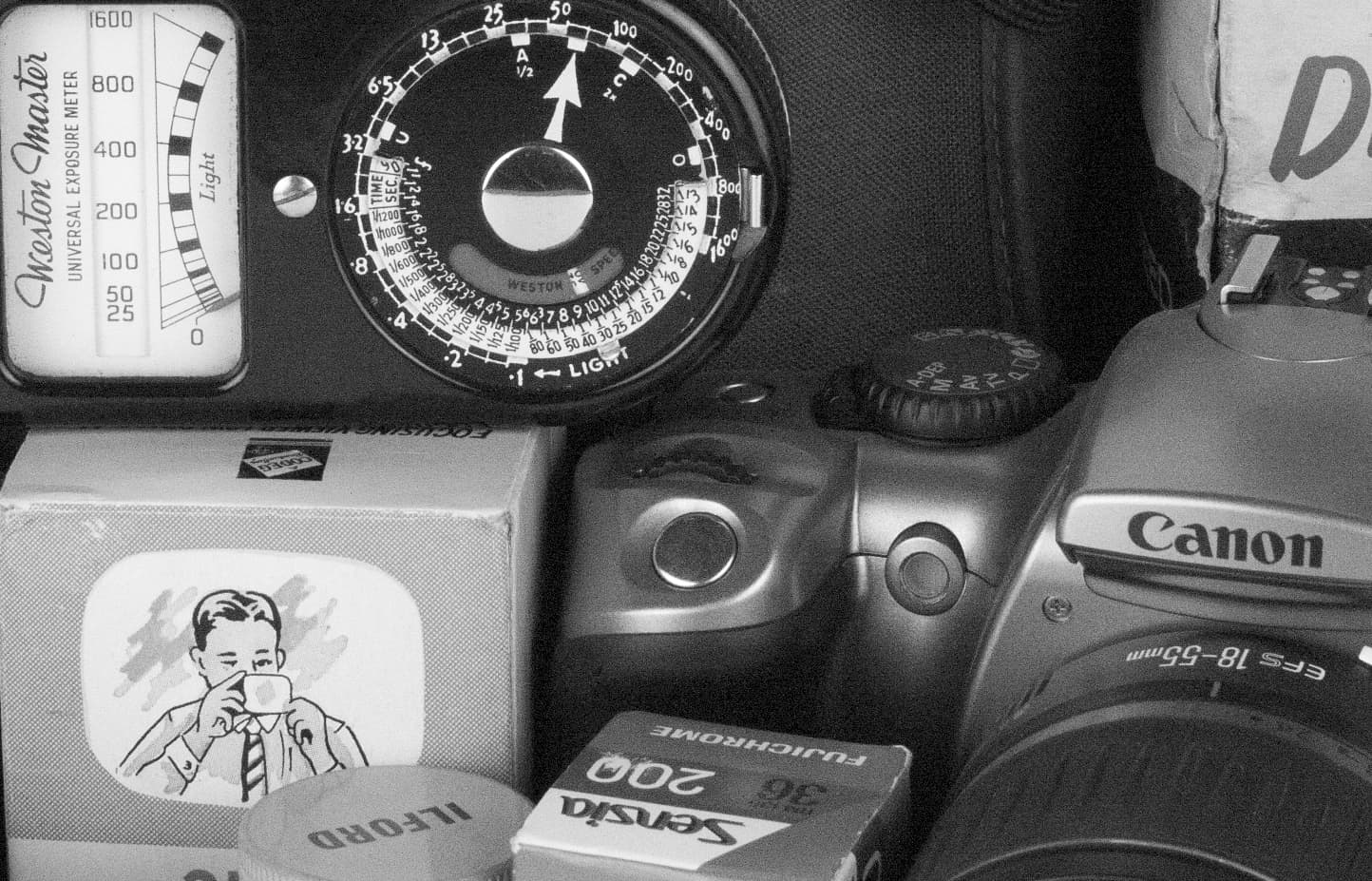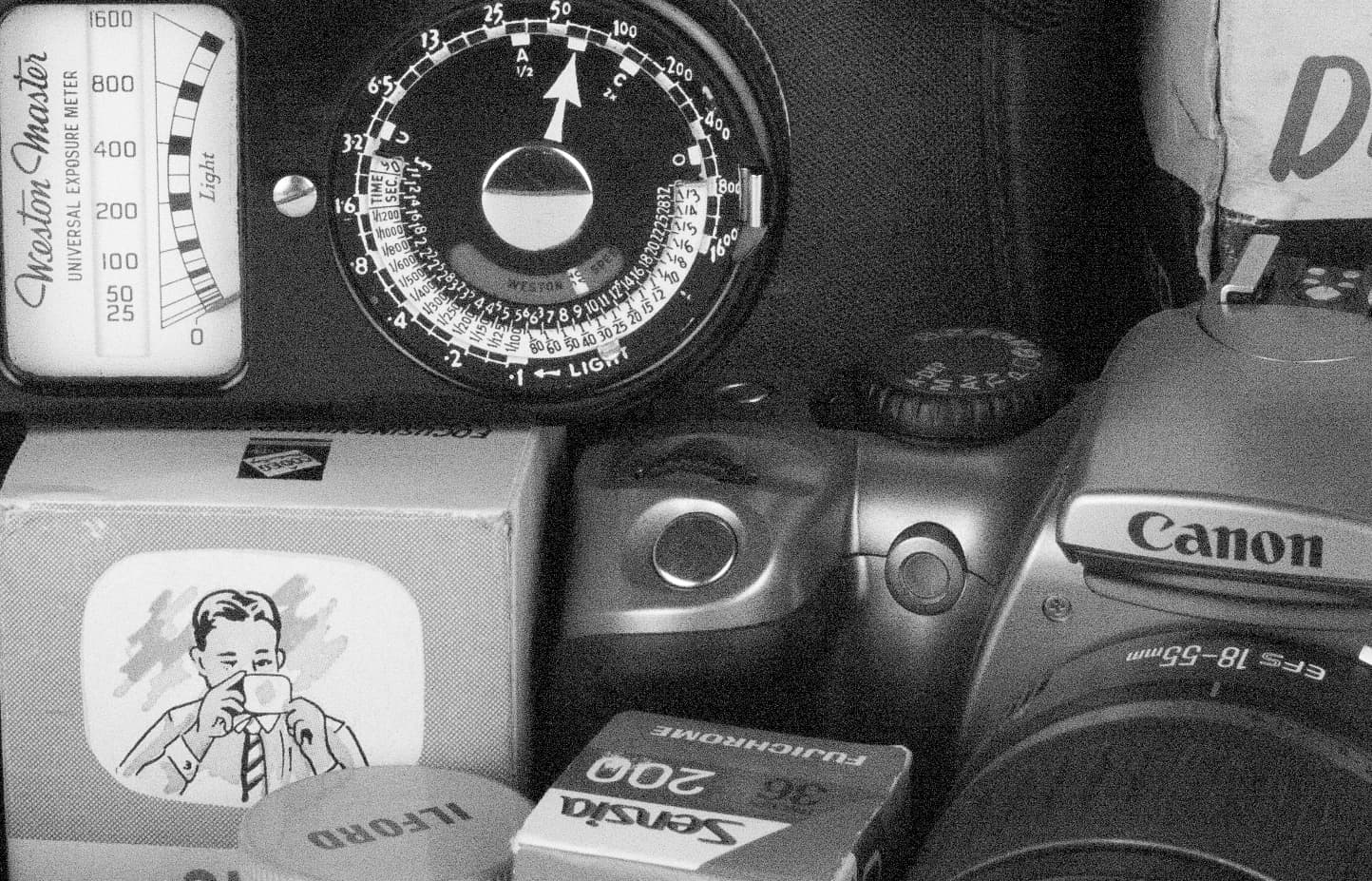Leica M Monochrom (Typ 246) Review – At a glance
- Shoots only in monochrome
- 24-million-pixel, full-frame CMOS sensor
- ISO 320-25,600
- 3in, 921,600-dot fixed LCD
- Leica M mount
- £5,750 body only
In May 2012, Leica announced its first M Monochrom rangefinder. Modelled on the Leica M9, it boasted an 18-million-pixel CCD sensor with the unique feature that it shot only black & white images.
Many non-Leica users cannot understand why anyone would want to restrict themselves to shooting solely in black & white, when colour images can be converted to mono in post-production. However, Leica photographers – many of whom are more likely to shoot in black & white than in colour – pride themselves on being different in their approach to photography, and the thinking behind the camera’s development is as bold as it is strange.
The original M Monochrom is a popular camera and is used by many Leica enthusiasts. Now, three years on, there’s a new M Monochrom in the form of the Leica M Monochrom (Typ 246), which boasts Leica’s newly developed CMOS sensor along with a host of other improvements.
Leica M Monochrom (Typ 246) Review – Features
The new Leica M Monochrom (Typ 246) was launched in April, just eight months after the release of the Leica M-P (Typ 240), and has an identical body shape to that camera. Both feature the same Leica-developed 24-million-pixel, full-frame CMOS sensor which does not use an optical low-pass filter. However, the M Monochrom’s sensor doesn’t have a colour filter array (CFA) either. The removal of these two filters has a positive effect on image quality, resulting in sharper images, better dynamic range, better high ISO performance and no colour noise artefacts.
Removing the CFA also means that more light can reach the sensor and, as a result, the sensitivity range of the M Monochrom is ISO 320-25,000. While luminance noise at ISO 320 will be less than it would be with the CFA present, not having the low base of say ISO 100, is a disadvantage. Losing 1.5 stops at the low end makes shooting in bright conditions more difficult, although this can be rectified by the use of a neutral density filter.
The M Monochrom uses Leica’s Maestro processor, which is a bespoke chip based on the Fujitsu Milbeaut media processor. This is the same processor as that used in the Leica M and it is claimed to be three times faster than the sensor used in the original M Monochrom.
There’s a 2GB buffer that allows 4 frames per second shooting for a total of 30 frames. Users can select shoot in JPEG, compressed raw, uncompressed raw or a combination of raw + JPEG simultaneously.
Leica’s M mount is fitted to the M Monochrom. M-mount lenses are arguably the best lenses currently available, with a host of models boasting incredible sharpness. However, while their brilliance is accompanied by suitably substantial prices, Leica is keen to point out that lenses from its discontinued R-mount SLR system will also fit onto its M-series models using an adapter. Most other lenses can also be used, including old manual SLR optics, with the right adapter. These generally can’t be focused using the optical rangefinder, so will work best in Live View mode.
The M Monochrom records video in 1920 x 1080 Full HD resolution or 1280 x 720 HD resolution at either 24 or 25 frames per second, all in black & white. A built-in mono microphone is featured on the top left of the camera, although it’s possible to record stereo sound using a microphone that attaches to an adapter on the hotshoe.
There are a number of add-ons available for the M Monochrom, including a version of the Summicron-M 35mm f/2 Asph (£2,500) and Summilux-M 50mm f/1.4 Asph (£3,125) lenses have a black-chrome finish that match the subtle black of the new camera.
Just had a shoot with the new Leica M Monochrom Typ 246. Absolutely beautiful! pic.twitter.com/7QajDyLyqw
— Callum Mcinerney (@CMRileyPhoto) April 30, 2015
Unlike with a black & white conversion from a digital file, there is no colour information in which to lighten or darken an individual colour channel on the M Monochrom. However, in August Leica will be releasing yellow, orange and green colour filters in 39mm and 46mm sizes for controlling the tonal contrast (prices to be announced).
The optional handgrip for the Leica M will fit the M Monochrom, adding both GPS and tethering for studio photographers. Many other Leica M accessories can be used too.
Raw files from the M Monochrom are saved in Adobe DNG format. A copy of Adobe Lightroom comes included with the camera, which is among the best post-production software available.
Leica M Monochrom (Typ 246) Review – Build and Handling
My first impression on picking up the new Leica M Monochrom is that it is a lot heavier than I expected, weighing a hefty 680g without a lens. The heavy weight is due to its construction, as the body is made from die-cast magnesium-alloy, with brass top and base plates. It is finished with black chrome, with a leatherette grip surrounding the camera’s front. Leica says the camera is designed to be discreet, and with an all-black matt finish – and no famous Leica red-dot branding – it is exactly that.
Like most Leica cameras, the control layout of the new M Monochrom is very simple. On the top-plate is the shutter-speed dial, the shutter button and an on/off switch that is used for drive modes, single continuous and self-timer. The shutter button goes from 8secs to 1/4000sec with automatic and bulb modes also included. Manual aperture control rings are featured on all Leica M-mount lenses.
Next to the shutter button is a silver button marked M for movie record. Along the left side of the LCD are six buttons that cover live view on/off, play for reviewing photos and video, a delete button, ISO button, Menu and Set button used to confirm settings.
On the opposite side of the LCD is an ‘Info’ button and a four-way controller for navigating the menus, and a scroll wheel for adjusting settings. On the front of the camera is a switch that allows users to manually select frame lines inside the viewfinder, with three paired options of 28mm / 90mm, 35mm / 135mm and 50mm / 75mm available.
The Info button is a useful feature, as tapping it while shooting shows an onscreen information display including battery status and how much space is on the SD card. Also, when reviewing images, the button shows highlight/shadow clipping and setting details of each shot.
Leica M Monochrom (Typ 246) Review – LCD, Viewfinder and Focusing
Rangefinders provide a very different user experience. For those who haven’t handled this type of camera, using its viewfinder is like looking through a window, and inside that window are small frame lines where your picture will be composed. Street photographers, in particular, love rangefinders, as the entire scene can be seen and composed within those frame lines.
"Another 9 to 5" – shot this last week with the Leica M Monochrom Typ 246. pic.twitter.com/OQExRXGUP7
— Callum Mcinerney (@CMRileyPhoto) May 21, 2015
In the centre of the rangefinder is a small box that is coupled to the focusing of the lens. To correctly focus on an area of the scene, the image in the small box needs to align itself with the rest of the viewfinder.
However, we’re talking about a very small box, and when working with wide-aperture lenses it can be quite difficult to get the focus right as any slight inaccuracy will mean the focus has missed. You are very much dependent on having good vision and the ability to see what you are focusing on when using a rangefinder and it’s also quite time-consuming. The more you use it, the quicker you get, but it’s still not particularly fast. Thankfully, I have very good vision, and although I would say using a rangefinder is hard work, it’s very precise, incredibly enjoyable and gives a great deal of satisfaction when you nail the focus perfectly.
For those who struggle with the rangefinder, there is always live view or an optional electronic viewfinder (Leica Visoflex EVF2, £360) that can be attached to the hotshoe and accessory port. When I was at a Leica Meet event for Leica users, I noticed that the large majority of the devout M-system shooters were using the identical Olympus VF-2 viewfinder instead. This EVF translates what the LCD is doing into the viewfinder, complete with focus peaking and magnified live view display.
When trying to focus the Leica Noctilux-M 50mm f/0.95 Asph lens wide open, the live view with a 10x magnification enlargement was the only way to get close to focusing the lens properly. In this situation, an optional viewfinder would have been useful.
The viewfinder is also helpful for composing shots quickly using focus peaking, as the rangefinder usually requires the photographer to line up the centre of the rangefinder, focus and then recompose the shot – unless you’re taking an educated guess.
With a resolution of 921,600 dots, the 3in screen is one of the best we have seen from Leica. The anti-reflective coating does a good job of cutting reflections, and provides good visibility in bright light. One slight downside, though, is that the screen has a slow refresh rate in comparison to those of many other cameras.
Leica M Monochrom (Typ 246) Review – Metering and Dynamic Range
There are two settings on the M Monochrom. Advanced is evaluative metering that meters from the image sensor, and Classic, inherited from Leica film cameras. Classic meters from grey-painted blades on the shutter curtain and provides centre weighted metering, but is less accurate than Advanced metering.
Thanks to the camera’s great dynamic range it is possible to bring up a lot from the shadows, but once the camera goes near the white point of highlight details there’s very little that can be brought back. Highlights tend to clip very easily with evaluative metering.
Throughout my time shooting with the M Monochrom I used between -0.3EV and -1EV exposure compensation to prevent highlight clipping. With stacks of detail that can be brought back from the shadows and midtones, it makes sense to shoot in this way and protect the highlights. However, it would have been useful to see a highlight-protection metering system of the kind found on the Nikon D810 and the Nikon D750. I think this would greatly benefit this Leica and play to the strengths of its sensor.
With the M Monochrom’s excellent dynamic range and small amount of luminance noise from the sensor, it’s possible to pull up a lot of detail from the shadows. Also, with no colour filters and no colour noise or artefacts that come with it, the shadow slider can be pushed more than usual (three or four stops) before the image is affected by noise.
Leica M Monochrom (Typ 246) Review – Image Quality
Leica’s unique monochrome sensor has imaging properties quite unlike conventional Bayer-pattern sensors, and the full extent of its capabilities is revealed in our tests. With every individual sensor pixel providing discrete luminance data for its location in the image, there’s no need for any additional processing such as demosaicing or white balancing to construct the final photograph (beyond gamma correction of the sensor’s linearly-recorded data). The result is superb pixel-level resolution, and an incredibly fine organic noise pattern.
With the low noise comes impressive dynamic range at low ISOs – in fact, among some of the highest we’ve seen. This means there’s a huge amount of latitude to recover shadow detail from low ISO raw files. The flip side of this, though, is that no clipped highlight detail is recoverable at all – once it’s gone, it’s gone.
Dynamic range
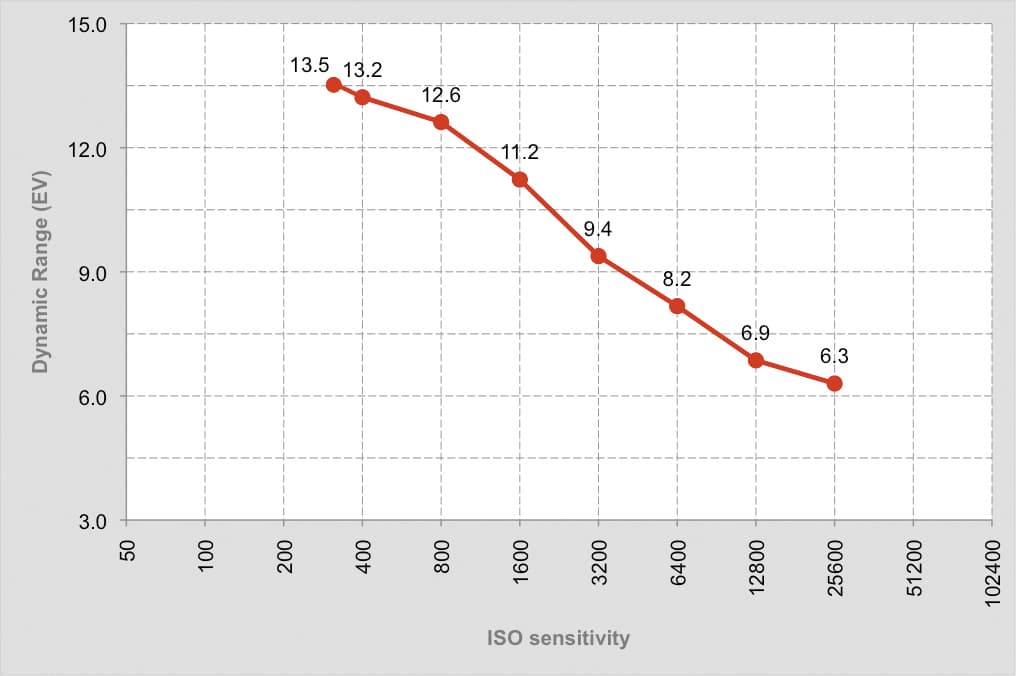
At its base sensitivity of ISO 320, the M Monochrom delivers a remarkable 13.5 stops of dynamic range according to our Applied Imaging tests. In practical terms, this means you can recover at least 3.5 extra stops of shadow detail before noise becomes a problem. Dynamic range remains impressive even at ISO 3200, with 9.4EV recorded, which means that there’s still some leeway for processing, and it’s only at the top two ISO settings that it drops below 7EV.
Resolution
With its 24-million-pixel full-frame sensor that has no optical low-pass filter, the M Monochrom does remarkably well in our resolution tests. At ISO 320 the lines of the chart are clearly delineated to 3600lph at least, with only a hint of blurring and aliasing at higher frequencies. The fine-grained noise pattern also means that resolution barely drops at all as the ISO is raised, still exceeding 3000lph even at the top sensitivity of ISO 2500.
Noise
What’s most remarkable about this series of crops at increasing ISO sensitivity is how little there is to see. Image quality is excellent at the base setting of ISO 320, with high levels of detail and barely any visible noise.
Tonality is excellent too, with subtle distinctions between shades of grey. Impressively though, the image quality is practically indistinguishable through to ISO 1600, and it’s only at ISO 3200 that the barest hint of luminance noise starts to creep in, which even then is only visible when viewing images on-screen and examining them for pixel-level detail.
Even at ISO 6400, while noise is more visible, it has minimal negative effect on the image, instead resembling exceptionally fine film grain. It’s only at ISO 12500 and 25000 that image quality is really affected, with a clear loss of shadow detail.
Leica M Monochrom (Typ 246) Review – Our Verdict
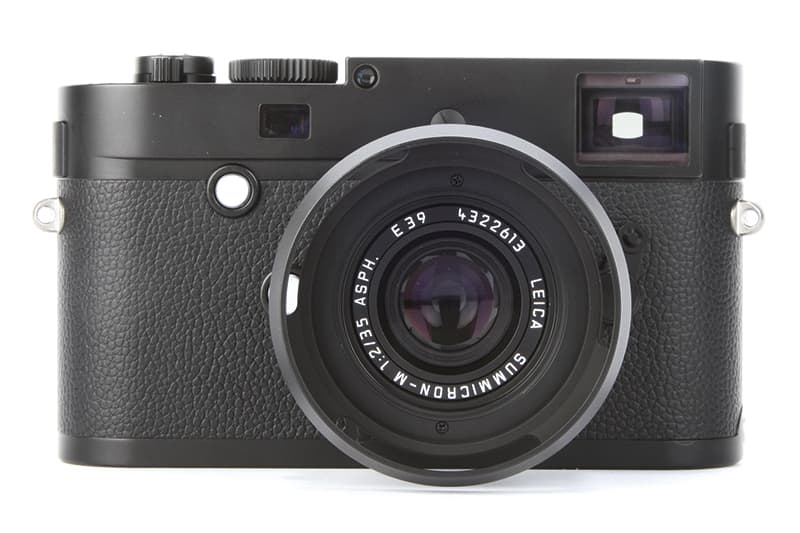 Mention the Leica M Monochrom and the question most people ask is, ‘Why would you want to limit yourself to shooting black & white only?’ Well, aside from the personal preference argument, the big advantage comes from doing away with the colour filters.
Mention the Leica M Monochrom and the question most people ask is, ‘Why would you want to limit yourself to shooting black & white only?’ Well, aside from the personal preference argument, the big advantage comes from doing away with the colour filters.
This means no colour noise or artefacts which would be present in images shot in colour and converted to black & white. Also, the removal of the colour filters make the sensor more sensitive to light and help the sensor achieve a better dynamic range.
With black & white photography it’s certainly an advantage to have this brilliant dynamic range and tonal depth. Noise starts to become visable in shots at the sensitivity ISO 1600 but as it’s soley luminance noise, it gives the image a ‘filmic’ quality and rather than become burdensome it often adds character to the images. I would happily use images right up to 6400 without being fazed about the level of luminance noise.
The image quality on previous Leica M cameras has never been of class-leading quality, but the new CMOS sensor has brought Leica forward a lot. It’s on a par with the best full-frame sensors available deliverying a fantastic dynamic range and it can resolve a very impressive amount of detail. Coupling this sensor with the strong lens line-up and the small, discrete body of the Leica M Monochrom makes this a serious piece of kit, but you’ll certainly pay a premium for it.
Although the M Monochrom is ludicrously expensive, it has some real character to it and that’s what you buy into. When you buy a Leica, you buy into an ethos about photography. The button layout and the build of the camera have a traditionalist quality. There’s nothing else quite like it and you either subscribe to it or you don’t.

